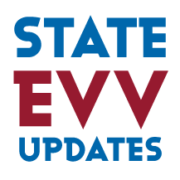When Rounding Rules Differ Between Billing and Payroll
In some states with EVV mandates, providers are losing money because they must pay their employees more than than can bill for. This happens when rounding rules in the EVV legislation differ from payroll rounding rules set by the labor department.
Most programs will only pay for services in 15-minute increments, but EVV solutions capture exact clock-in/out times. This means that if a caregiver clocks out at 11:14, the provider may not be allowed to bill the last 14 minutes – even though DOL regulations require the provider to pay the employee for those minutes.
Recapturing “Missing” Minutes
“Missing” minutes are those extra minutes that do not add up to a billable unit. While some states don’t allow providers to capture “missing” minutes, Missouri does. The state’s EVV legislation says:
“In no way shall this rule prohibit the
vendor/provider’s ability to accrue partial units pursuant to 13 CSR 70-91.”
The Missouri Department of Social Services says providers may let these minutes accrue until they add up to billable units. For example, if a caregiver works 143 minutes in a billing period, the provider will bill 9 units and rollover 8 minutes to the following period.
Unfortunately, providers who cannot rollover minutes to the following billing period must find creative ways to reconcile rounding discrepancies. For example, an EVV system like Agency Workforce Management warns employees to not clock-out before a unit is complete. The system may suggest that the employee wait a few more minute to clock out.
Leave a Comment
Does the EVV legislation in your state include different rounding rules? How do you avoid paying for more than you can bill?

 2018 MITC
2018 MITC




 2018 MITC
2018 MITC